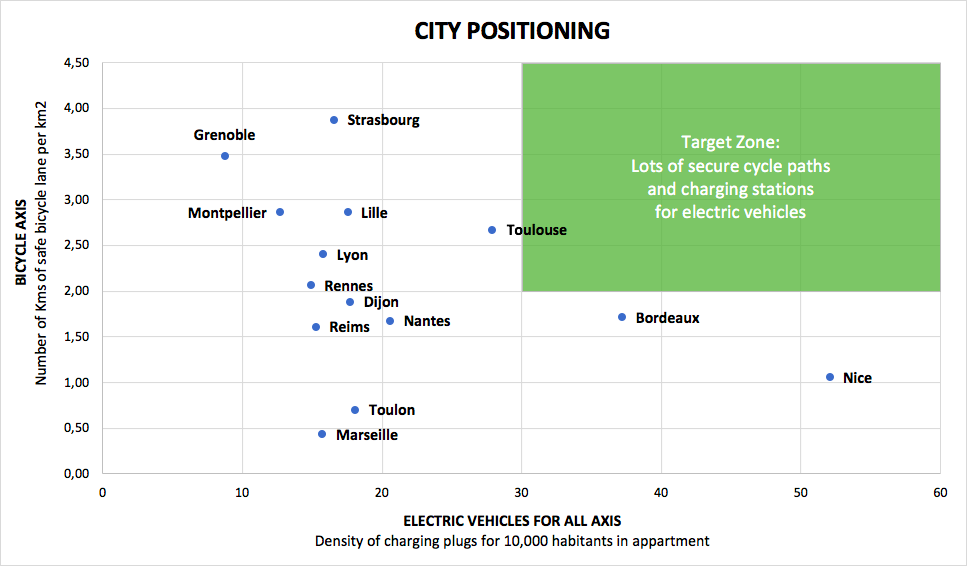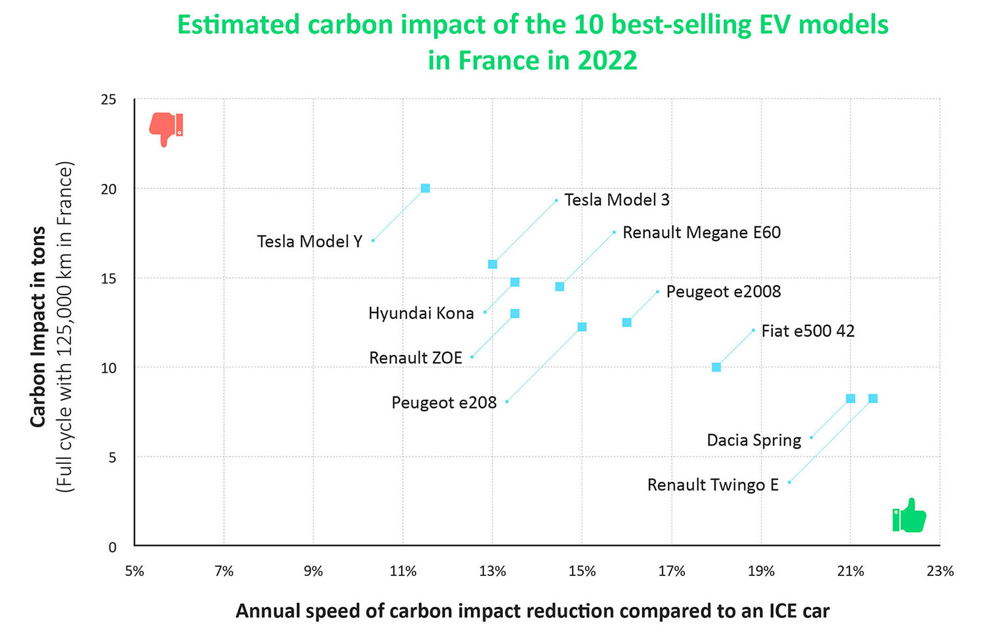CO2 Barometers
Are cities ready for the transition to low-carbon mobility? Which electric vehicles emit the least carbon? To answer these questions, M@Air publishes barometers: they allow to identify the "champions" to be inspired by their good practices in a constructive emulation.
CO2 barometer of French cities
Three recent and rapidly spreading technological changes facilitate the reduction of carbon emissions in everyday mobility: the electric bicycle, the electric vehicle and digital technology via carpooling platforms. The electric bicycle addresses mobility distances of less than 10 km, the electric vehicle clearly allows in France to strongly reduce emissions for distances greater than 10 km and carpooling is a perfect answer to reduce emissions from thermal cars which represent more than 95% of the existing car fleet.
Public transport has a role to play, but it has existed for 150 years and it is clear that in many urban areas 75% of work trips are made by car, despite its existence.
Our first barometer shows the relative level of equipment of cities in charging stations and bike paths.


Three recent and rapidly spreading technological changes facilitate the reduction of carbon emissions in everyday mobility: the electric bicycle, the electric vehicle and digital technology via carpooling platforms. The electric bicycle addresses mobility distances of less than 10 km, the electric vehicle clearly allows in France to strongly reduce emissions for distances greater than 10 km and carpooling is a perfect answer to reduce emissions from thermal cars which represent more than 95% of the existing car fleet.
Public transport has a role to play, but it has existed for 150 years and it is clear that in many urban areas 75% of work trips are made by car, despite its existence.
Our first barometer shows the relative level of equipment of cities in charging stations and bike paths.
Electric car barometer

We show here an estimate of the total life cycle carbon impact of the most sold electric vehicles in France in 2022. The calculation method and the associated article are available under these links: